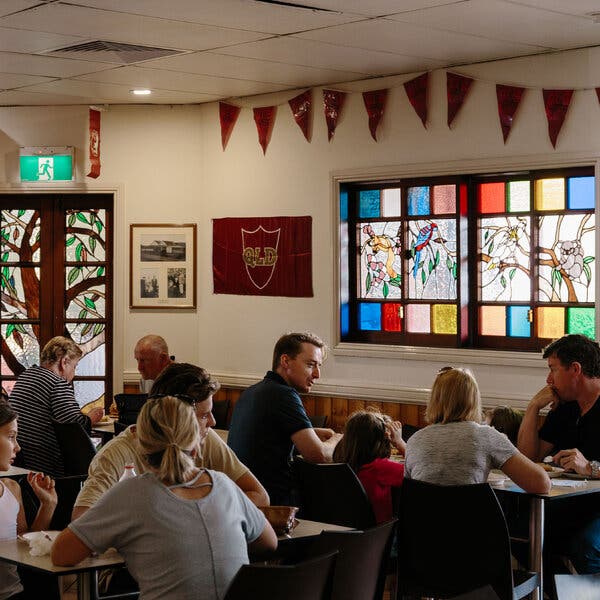Letter 371
Young practitioners are helping make stained glass, which fell out of fashion over two decades ago, a vibrant art form in Australia once again.

The Australia Letter is a weekly newsletter from our Australia bureau. This week’s issue is written by Julia Bergin.
Jonathan Rowatt, a Melbourne hospitality director, said he was tired of cafes featuring “clean lines,” bars fitted out in “varying shades of white” and restaurants with a “beige aesthetic.”
So in 2021, while overseeing the refurbishment of a 12-lane bowling alley and leisure center, he decided to commission 35 yards of stained glass.
The huge piece of blue, red, yellow and white stained glass cost about $34,000 and took more than a year to create and install. Now complete, the work by Jodie-Mae Holm, a Melbourne artist, wraps all the way around the top of the building’s bar, bistro and front desk.
Ms. Holm, 27, has worked with stained glass for only three years, but she’s one of a dozen young artists who industry veterans say are responsible for helping revive the art form in Australia.
“In 2015 we only had four young people under the age of 40 in the whole of Australia who had been trained to properly conserve stained glass,” said Donna Kennedy. She is the director of GLAAS, a nonprofit organization devoted to stained glass.
Lead lighting, as it’s also known, is the artistic practice of pairing cut glass with malleable rods of lead to depict figurative or abstract forms. In the early 1900s, it was common in Australian homes to have stained glass in the front door and complementary window fittings throughout the rest of the house.



